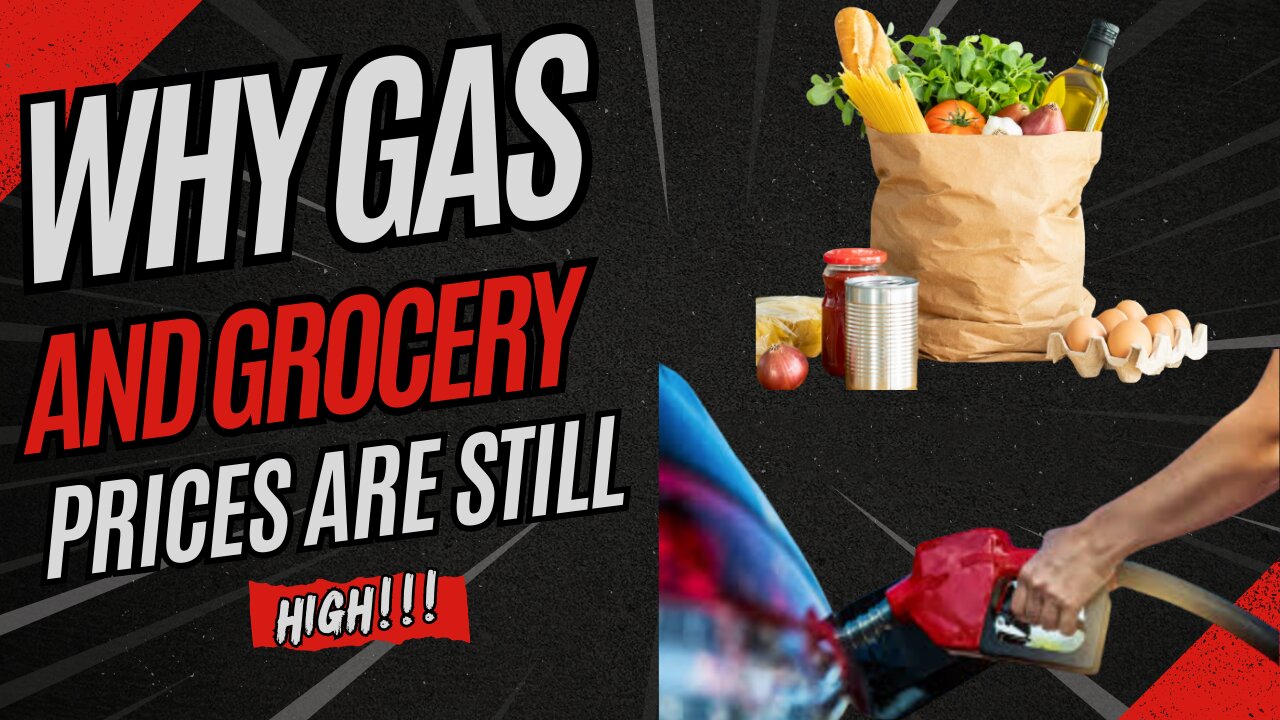Premium Only Content

Why Are Grocery And Gas Prices Still High
#groceryprices #gasprices #gasandgroceries
#democrats #politics
From Groc 3
Grocery and gas prices can vary significantly across states due to a combination of economic, regulatory, and regional factors. In states often classified as "Blue" (typically Democratic-leaning), several dynamics might contribute to higher prices, though these are not universal and can differ by location. Here's an exploration of potential reasons based on available trends and insights:
For gas prices, one key factor is state-level taxes and environmental regulations. States like California, Washington, and Hawaii—often Blue states—tend to have some of the highest gasoline taxes in the U.S. For example, as of late 2024, California's gas tax was among the highest at over 77 cents per gallon, compared to lower rates in states like Alaska (around 9 cents). Additionally, these states often mandate special fuel blends to reduce emissions, which are more expensive to produce. Transportation costs also play a role; remote states like Hawaii face higher shipping expenses for fuel, driving up pump prices. On April 1, 2025, California’s average gas price remains elevated, historically hovering around $4.65-$4.81 per gallon, far above the national average of $3.08-$3.17 reported in March 2025.
Grocery prices are influenced by a mix of supply chain costs, labor expenses, and local economic conditions. Blue states, particularly those with large urban centers like New York or California, often have higher costs of living, which translate to increased wages for workers in retail, transportation, and agriculture. These costs can get passed on to consumers. For instance, operating grocery stores in high-rent areas or regions with stringent labor laws (e.g., higher minimum wages) can inflate prices. Additionally, some Blue states are farther from major food production hubs, increasing transportation costs—especially when gas prices are high. In early 2025, food-at-home prices nationwide rose 1.9% year-over-year, but states with lower median incomes or higher operational costs might feel this more acutely.
Regional supply issues also matter. Take California: its strict environmental and land-use policies can limit local agricultural output, while events like droughts (affecting beef and produce) or avian flu outbreaks (spiking egg prices by 58.8% in February 2025) hit harder where supply chains are already strained. Meanwhile, consumer demand in wealthier Blue state metro areas can keep prices elevated, as businesses face less pressure to compete on cost.
That said, it’s not a simple red-blue divide. Some Red states, like Alaska or Nevada, also see high gas prices due to isolation or tourism-driven demand, while grocery costs in Southern Red states with lower incomes (e.g., Mississippi) can take up a larger share of household budgets despite lower absolute prices. Nationally, gas prices are trending down—forecasted to drop to $3.20 per gallon in 2025 per the EIA—thanks to lower crude oil prices, but Blue states’ structural factors might slow that relief.
In short, higher gas and grocery prices in Blue states often stem from elevated taxes, regulatory costs, and urban economic pressures—not solely political leanings. Local conditions, from refinery capacity to weather impacts, add layers of complexity. Are you curious about a specific state’s situation? I can dig deeper if you’d like.
-
 2:31:01
2:31:01
The Connect: With Johnny Mitchell
1 day ago $38.53 earned"It's About To Get Worse"- CIA Agent Andrew Bustamante Explains Why It's Time To Leave America
47.8K74 -
 16:21
16:21
The Pascal Show
1 day ago $2.44 earned'THE FEDS MADE THIS UP!' Candace Owens Drops BOMBSHELL Pushing Back On Details In Charlie Kirk Case
9.94K12 -
 LIVE
LIVE
Lofi Girl
2 years agoSynthwave Radio 🌌 - beats to chill/game to
295 watching -
 25:39
25:39
DeVory Darkins
14 hours ago $21.63 earnedMass shooting erupts in Michigan as bombshell study shows left wing political violence skyrocketed
43.2K122 -
 5:55:33
5:55:33
MattMorseTV
12 hours ago $131.22 earned🔴Portland ANTIFA vs. ICE.🔴
176K343 -
 3:13:00
3:13:00
Badlands Media
1 day agoThe Narrative Ep. 40: Acceleratia.
81.4K30 -
 6:57:01
6:57:01
SpartakusLIVE
11 hours ago#1 Solo Spartan Sunday || TOXIC Comms, TACTICAL Wins, ENDLESS Content
66.6K5 -
 49:45
49:45
Sarah Westall
11 hours agoComedians take Center Stage as World goes Nuts w/ Jimmy Dore
47.9K21 -
 3:26:14
3:26:14
IsaiahLCarter
18 hours ago $12.88 earnedAntifa Gets WRECKED. || APOSTATE RADIO 030 (Guests: Joel W. Berry, Josie the Redheaded Libertarian)
55.1K1 -
 4:44:18
4:44:18
CassaiyanGaming
9 hours agoArena Breakout: Infinite Dawg
34.7K2